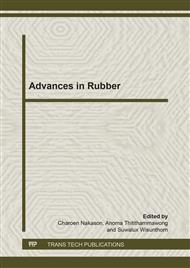p.433
p.437
p.441
p.445
p.450
p.454
p.458
p.462
p.466
An Application of Lean Supply Chain Management for Cost Reduction in Block Rubber Industry
Abstract:
Application of a lean concept to supply chain management for the block rubber industry is presented. It seeks to reduce the total systemwide cost by reducing wastes throughout the supply chain. Value stream mapping is used to identify non value added activities in the chain. Four major stakeholders are included: rubber grower, minor collector, major collector, and manufacturer. Four study steps are involved: 1) collection of data for a supply chain model constructed; 2) creation of a value stream map and identification of non value added activities; 3) analysis of root causes of non value added activities, or wastes, identified in the first two steps; and 4) proposal of practical guidelines to reduce or eliminate the wastes. Results show that transportation contributes the second highest cost after personnel cost, but is more practical to be trimmed. Hub-spoke concept along with vehicle routing analysis is recommended to be further explored in depth for practical implementation.
Info:
Periodical:
Pages:
450-453
Citation:
Online since:
November 2013
Price:
Сopyright:
© 2014 Trans Tech Publications Ltd. All Rights Reserved
Share:
Citation:


